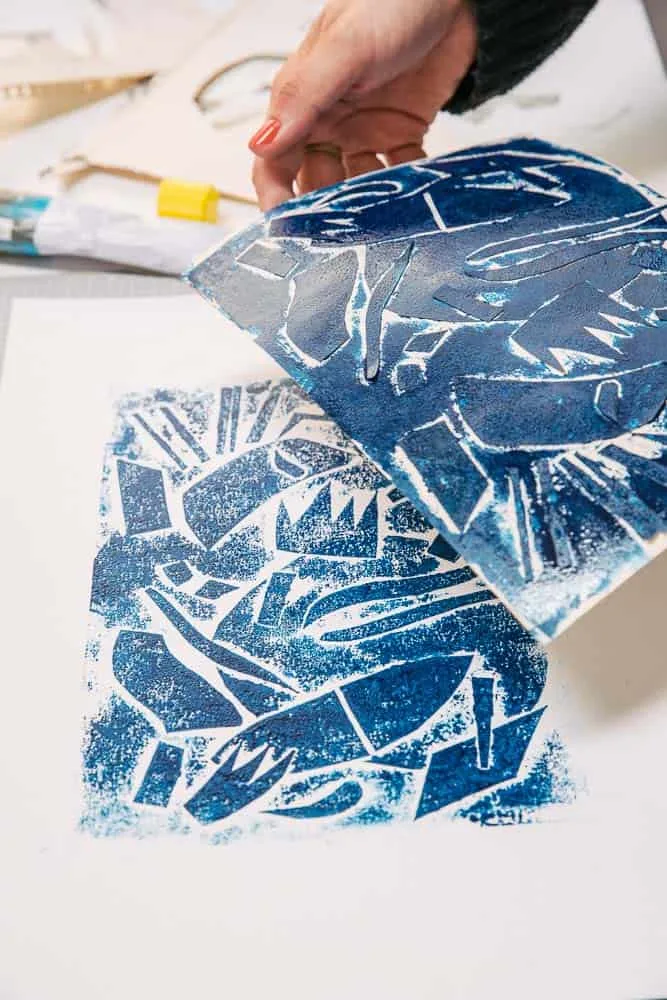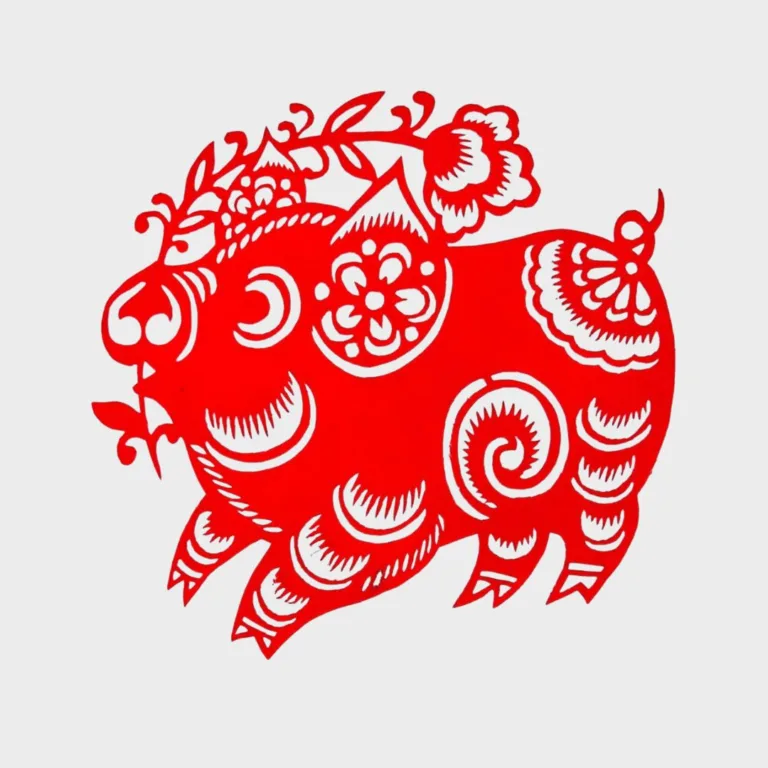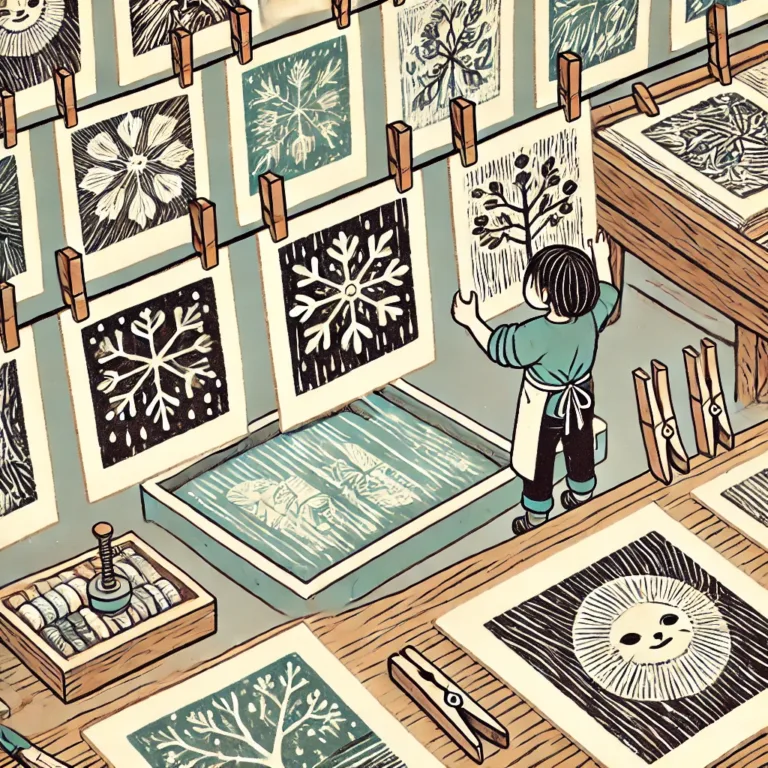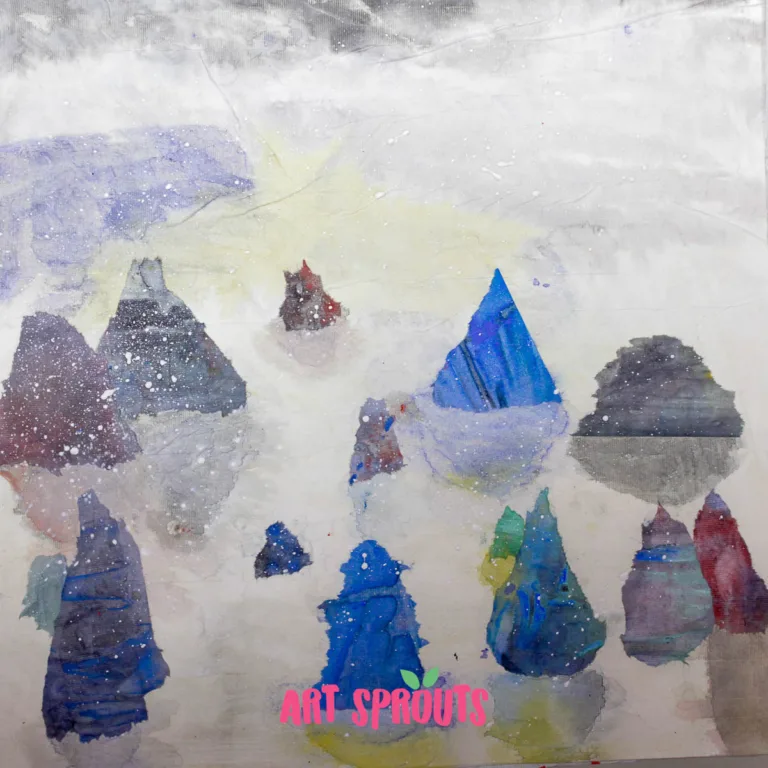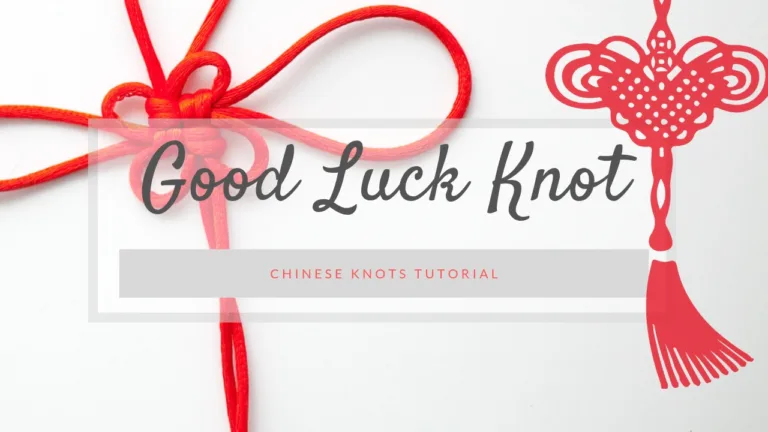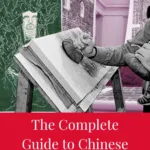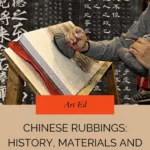The Complete Guide to Chinese Rubbing Art: Tayin Techniques, History, and Materials
Over the ten years I spent working at an art studio in China, we explored a wide range of techniques. Some were based on our formal training, others were inspired by art history, and many came from the cultural heritage we were surrounded by in China. One technique that consistently stood out was Tayin, or stone rubbing.
Although Tayin is widely known in China, it remains relatively unknown in the West. I would even argue that, alongside block printing, Tayin is one of the most defining practices of traditional Chinese art. This is because it relies on two fundamental materials—Xuan paper and ink—both of which have shaped Chinese art and culture for millennia. These materials aren’t just art supplies; they are central to the development of Chinese calligraphy, painting, and craftsmanship.
- Chinese Calligraphy for Kids: Hands-on Activities to Discover the Beauty of Chinese Calligraphy
- Chinese Knots how-to: The complete guide to Chinese New Year traditional craft
Xuan paper, known for its strength and absorbency, is ideal for capturing the detailed impressions of stone rubbings. Ink, in turn, provides the contrast needed to bring out these details, making Tayin an amazing technique for explorationa and process-based projects.
The simplicity of the materials and process makes it adaptable for all kinds of projects, and we frequently incorporated Tayin into our studio’s curriculum, exploring both traditional and modern applications.
I’m working on a whole list of projects using Xuan paper but, for now, let’s explore the rich and somewhat unknown history of Tayin.

A Brief History of Tayin
Origins of Stone Rubbing
Tayin, or stone rubbing, originated in China during the Han Dynasty (206 BCE – 220 CE). It began not as an art technique, but as a practical method for reproducing important texts and images carved into stone. Stone inscriptions on monuments, tombstones, and tablets were vulnerable to erosion from natural elements. Tayin allowed these inscriptions to be carefully copied onto paper by pressing thin, absorbent sheets—such as Xuan paper—onto the stone and rubbing ink over the surface, creating an accurate imprint.
I’ve already talked about this catalogue in another post, but I feel it’s worth reiterating just how exceptional and comprehensive it is in showcasing the millennia-long significance of ink and paper in shaping Chinese art and cultural identity.
But let’s go back to our story.
The primary purpose of Tayin was preservation, as it enabled the replication of official records, religious texts, and historical documents, safeguarding them for future generations. Scholars, government officials, and religious figures could then study and circulate these rubbings without needing to transport or risk damaging the original carvings.

Laws Carved in Stone: A Historical Practice
An interesting example of Tayin’s practical use in ancient China was in the realm of law. Legal texts were often carved into stone to prevent any tampering or modification. While the general population was largely illiterate, these stone-carved laws were primarily intended for mandarins, government officials, and other members of the political and royal elite. To ensure that these laws could be studied across the empire, rubbings were made from the stone tablets and distributed to royal palaces, temples, and other official institutions.
Read more:
This process allowed those in power to ensure legal consistency throughout China, even though the average layperson could not directly read the texts. The technique’s role in preserving and spreading these legal documents highlights its importance in governance, as well as its practical value in maintaining the integrity of official laws.

Role in Cultural Preservation
Tayin’s application expanded well beyond the legal realm. During the Tang (618–907) and Song (960–1279) Dynasties, it became a critical technique for preserving religious inscriptions, calligraphy, and monumental carvings. Temples, tombs, and royal monuments were rich with carved texts and images that risked being lost to time. By making rubbings of these carvings, scholars and historians could study the inscriptions without needing to visit the original sites, many of which were inaccessible or fragile.
Through Tayin, key aspects of China’s cultural and religious history were documented, ensuring that ancient wisdom, scripture, and historical events could be transmitted and preserved. The importance of this technique was magnified as China grew into a vast empire, where scholars, officials, and religious figures relied on stone rubbings to study distant monuments and inscriptions. Without Tayin, many of these carvings, subjected to the elements over time, would have been lost.
Regional Variations: The Northern and Southern Schools of Tayin
During the Song Dynasty (960–1279), Tayin saw the development of two major schools—Northern and Southern—each with its own techniques and focus. This regional divide in Tayin practices was reflective of broader political and cultural differences in China at the time, notably due to the separation caused by the Five Barbarians Uprising.
The Northern School placed an emphasis on reproducing stone inscriptions, particularly monumental texts, such as legal decrees, epitaphs, and official documents engraved in stone. The focus was more on monumental calligraphy, leading to the rise of a method known as 碑学 (Beixue), or the study of steles. This school of thought valued the preservation of historical and political texts, which were crucial for governance and historical record-keeping.


The Southern School, by contrast, leaned towards a different tradition known as 帖学 (Tiexue), or the study of rubbings from calligraphy written in ink. This school was more focused on the preservation of calligraphy manuscripts rather than stone inscriptions, and the artistic quality of the writing was often emphasized. The Southern style was more delicate, with a greater attention to the brushwork and fluidity of characters, which aligned with the Southern regions’ more artistic and literary traditions.
Resources:
These regional variations show that Tayin wasn’t just a static, uniform practice but evolved into specialized schools with distinct cultural focuses. The phrase 北碑南帖 (Northern Steles, Southern Calligraphy) summarizes this divide, indicating how Tayin played different roles in the preservation of cultural heritage across China. While the Northern School prioritized the monumental aspects of Tayin, the Southern School viewed it as a way to honor the grace and artistry of handwritten calligraphy.

Materials and Tools Used in Tayin

Xuan Paper
Xuan paper is essential to Tayin due to its strength, flexibility, and ability to absorb ink without smudging. Made from the bark of the Pteroceltis tatarinowii tree and other plant fibers, it differs from ordinary paper because it doesn’t tear easily during the rubbing process. It captures fine details from stone surfaces without bleeding. Though sometimes mistaken for rice paper, Xuan paper is more specialized and has been perfected over centuries for traditional Chinese art forms, including calligraphy, painting, and stone rubbing.
Ink
Ink is essential in Tayin. Traditional Chinese ink, made from soot (often pine or oil lamp) and animal glue, is shaped into solid sticks. These sticks are ground on an inkstone with water to create liquid ink. For Tayin, ink consistency is critical—it should not be too thick, as it could obscure details, nor too thin, as it may bleed. High-quality ink ensures deep contrast, making the carved lines clear against the white Xuan paper.
Other Tools and Materials (Mostly optional)
- Soft Brushes (刷子): Used to apply water to both the stone surface and Xuan paper. Dampening the paper ensures it adheres smoothly to the carvings, preventing wrinkles and air bubbles.
- Ink Dabbers or Pads (拍子): Made from tightly wrapped cotton or soft cloth, dabbers help apply ink gently to the paper. This allows for controlled, even ink application without displacing the paper.
- Wooden Mallets or Beaters (敲槌): Light wooden tools used to gently tap the paper, pressing it into the carved grooves of the stone, ensuring full contact without tearing.
- Protective Cloth or Dry Paper: Used when tapping the paper with the mallet, adding a layer of protection to avoid damaging the delicate Xuan paper.
- Water Sprayer or Sponge: Ensures uniform moisture on the paper before it’s applied to the stone. This helps the paper conform to the stone’s surface smoothly.
- Adhesives (Optional): Mild adhesives or starch paste may be applied to secure the paper’s edges during the rubbing process to prevent shifting and blurring.
- Cleaning Brushes: Stiff brushes are essential for cleaning the stone surface, ensuring no dust or dirt interferes with the clarity of the rubbing.


Preparation Steps
- Clean the Surface: Thoroughly clean the surface to remove dust, dirt, or debris that could affect the rubbing.
- Position the Paper: Carefully place the Xuan paper over the stone. For larger stones, dampen the paper to increase flexibility.
- Dampen the Paper: Using a brush or sponge, moisten the paper so it adheres to the stone’s contours without over-saturating it.
- Press the Paper into the Carvings: Use a wooden mallet or hands to press the paper into the carved lines. Patience is key to ensure the paper captures every detail.
- Apply the Ink: Once the paper has adhered and slightly dried, apply ink using the dabber. Start at the top and work downward, ensuring even coverage.
- Drying: Leave the paper to dry on the stone, either naturally or with gentle airflow.
- Remove the Paper: Once dry, carefully peel off the paper to reveal the finished rubbing.
How to make a Chinese Rubbing (via The Art Institute of Chicago)
Tips for Successful Tayin
- Consistency of Ink: Test the ink on a scrap piece of Xuan paper to ensure it has the correct consistency for the rubbing.
- Paper Handling: Wet Xuan paper is fragile, so handle it gently during application and removal to avoid tears.
- Environmental Conditions: A clean and dry environment minimizes dust or debris from affecting the final result.
- Practice: Tayin requires skill, so start with simpler carvings to gain experience before moving to more detailed ones.


Cultural Significance and Contemporary Practice
Tayin as a Cultural Practice
Tayin has deep cultural roots in China, primarily as a method of preserving historical, religious, and political records. Inscriptions carved into stone were used for centuries to document key aspects of Chinese history, from Confucian teachings to Buddhist texts, legal decrees, and genealogies. The importance of Tayin in Chinese culture is tied to its role in ensuring that these valuable texts could be passed down to future generations.
The technique was widely used during the Tang and Song Dynasties, when stone rubbings became an essential tool for scholars, officials, and religious figures to study texts without having to visit the original monuments. The rubbings were often taken from stone steles, which were large tablets placed in public spaces or religious sites. These steles contained inscriptions that were intended to last forever, but Tayin allowed the content to be copied and spread more widely.


Ghost pounding the Wall, by Chinese contemporary artist Xu Bing is arguably one of the best known examples of tayin in Chinese contemporary art. The artist used the stone rubbing technique to paper trasfer a whole section of the Great Wall of China.
Preserving Calligraphy and Historical Records
Tayin also became a key technique in preserving calligraphy styles from different eras. Stone rubbings allowed calligraphy from the Tang, Song, and later dynasties to be copied and studied by scholars and students. The precision of the rubbings made them an invaluable resource for understanding the evolution of Chinese writing styles. For example, rubbings of famous calligraphers’ works allowed their techniques to be replicated and passed on to future generations.
In addition to its role in calligraphy, Tayin was crucial in preserving historical records. Many ancient Chinese steles contained important information about land ownership, royal decrees, and family lineages. Through rubbings, these records were preserved and studied long after the original stone inscriptions had begun to fade due to weathering and erosion.
Save for Later:














